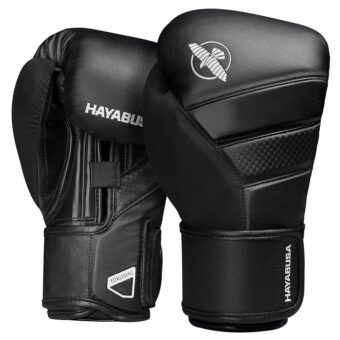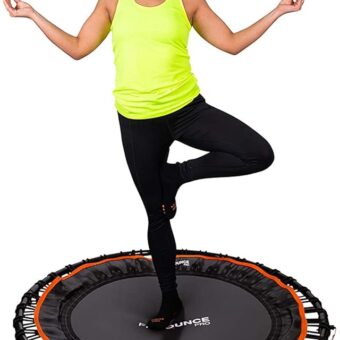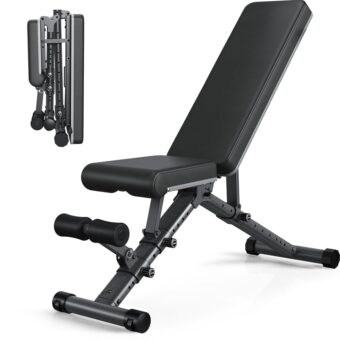Description
Going beyond the standard workout for boxers, this innovative manual introduces a diverse set of training methods, integrating them into drill sets that build the athletic attributes for which past and present fighters are known. From Leroy Jones sparring with chickens and Ken Norton’s 15 combined rounds of shadow boxing, sparring, and bag work to Ricky Hatton’s staggering 12-round sparring bouts with a body belt and Kosta Tszyu’s creative tennis-ball and head-strap punching apparatus, this guide highlights a wide vocabulary of exercises, all incorporating boxing-specific equipment. The drills can be performed solo or with a partner, and each piece of equipment is approached individually with detailed descriptions of routines, including floor exercises and drills with the heavy bag, medicine ball, horizontal rope, and jump rope. With two workout menus for weight training, this guide guarantees a regime to suit any individual need—be it professional or simply a desire to train like some of the best athletes in the world.
Read more




















Alan H. Kahn –
Mark has written a fully detailed and comprehensive book for those interest in physical preparation for boxing. He outlines the “traditional” methods of training, debunks some urban legends about the old ways, and presents a varied full body conditioning program that features many of the more modern innovative training methods. He covers areas such as “floor work” for pushing, pulling and core strength, Polymetric activities and weight training. All are complete with detailed pictures.
Of course, he also has detailed information about using tradition boxing training equipment, such as shadow boxing, bag work with heavy bags, light bags (speed and double end) and focus mitts, sparring, road work, rope jumping and ring footwork.
Like many of his titles, this is a well written, clear and concise “how to” guide for the serious boxer or those who might considering training athletes for boxing. I believe if you follow his methods and training you will ready to enter the ring when the bell sounds. I might add that this book would also be a great guide for the non-competitive fitness enthusiast that is looking for a challenging workout routine.
Suranee Perera –
Greetings from Sri Lanka! My son received this book as a gift from my daughter. He happens to be the boxing captain at his high school. In his own words – “good book with helpful tips!”
Delivery was fast for standard shipping because the book arrived two weeks early. Thank you Amazon for the fast delivery and thank you Mark for writing such a helpful book on boxing!
I.Carter –
I don’t do too many reviews only when I really like something. I want to say I absolutely love this book. The only other book as far as conditioning goes that is similar to this one that I personally have read is “Infinite Intensity”. And I love both books. If you are fighting or training to fight or just working out in martial arts for self defense and fitness this book will help and I would recommend for the combat athlete.
Suranee Perera –
Took a chance with this one and paid off. Great drills and exercises with good pictures and easy instructions. Definitely a read for boxers and workout people. Cardio cardio cardio!
K. G. A. Alavi –
I picked this book up about a month ago because, as a boxing coach, I was getting sick of putting my students through the same conditioning drills at every work-out. I wanted some variety, some new exercises, and some new challenges for my athletes.
I didn’t totally expect what I got : the work-out sections were predictable but good. The exercises were described with easy-to-understand pictures. At the end of the book Hatmaker has various work-out menus that address different muscle groups and types of strength/endurance. These were useful and make the book worth the money for coaches and boxers looking to supplement existing training.
But the book’s power punch, for me, was the intro. Mark Hatmaker spends a few pages debunking some of the old myths that haunt conventional boxing gyms. In a few efficient pages he puts the finger on some of the things that have annoyed me for years in the sport. When I was still boxing, my teammates and I used to deride the ‘communist Russian’ approach to boxing that sees many athletes ground down with boring, repetitive work-outs and over-training such as mindless road-work and sets and sets of push-ups.
I especially like the author’s take on road-work. As a boxer, I ate many, many, many miles on the tarmac. Most of these miles were at a comfortable pace. They gave me tendon-itis, ate lots and lots of time, took lots and lots of energy and brought me away from the gym where I might better spent my time working on technique. Hatmaker’s philosophy on roadwork is that boxers don’t run marathons. As amateurs, boxers train for 3 x 3 minute rounds or perhaps 2 x 4 minutes. Pros fight longer bouts, with 3 x 12 being the longest championship fights.
For amateurs, super-intense 9 or 8 minute bouts require explosive power and some endurance, but nothing near the type of endurance that is built by running 5+ miles per day. For boxing, sprints, interval training, hill running, and power-building exercises are best in terms of conditioning. His message : stop wearing out your cartilage running miles and miles.
The fast-and-efficient work-out plans offered in the book, if followed, will help save time that can be applied to learning the actual art of boxing. The sprint-and-lift-heavy philosophy also gives new perspective on the fact that many coaches continue to prescribe rounds and rounds of monotonous and even-paced banging away at heavy bags. Your athletes won’t do marathons of hitting punching bags either. Hatmaker’s book begs the question : why train boxers as if the goal were an epic 40-minute even-paced bout with the bag? He presents his reader with alternatives.
I would recommend this book to coaches and boxers looking to develop new training habits. I would highly, highly recommend it for many practitioners who have been in the sport for a while. In the era of Crossfit, its high time for the debunking of some of the Rocky-era ghosts that continue to haunt boxing !
terrie schauer –
A good read, this book challenges some conventions of old-school boxing training and introduced me to a number of drills I was not familiar with. If you are looking for a fresh approach to your training or even some drills you have never tried before, there’s a good chance you will find something useful in here.
Robert V Aldrich –
As an actual training manual, this leaves a lot to be desired. As a general list of (sometimes clever) lifts, it’s pretty good. It shines best as a bit of an expansion pack to an existing program. It won’t replace your copy of Convict Conditioning or Raising the Bar, but it will give you some new toys to play with.
Cliente Amazon –
good information, easy to follow instructions also
Ntchweidumela. –
Learned a lot of new and useful technics. Great for beginners and immediate fighters and coaches. Worth having in your library.
Tony cullina –
Excellent for over all knowledge of exercises, but lacks how & when to implement them into a boxing/ mma regimen
Kindle Customer –
Good book with usefull info. It only lacks a guideline to put the drills together with efficiency.
A recommended purchase.
Geraldine –
This is an excellent book with give so much more that you would expect. Even if you are not really into boxing, (which probo0bly means you would not give this book a second look after looking at the title), you can get more from reading the introduction of this book then most of the self help book out there. Yes the book concentrates on boxing with great example of exercises, training methods, with the old school Vs. new developments in the field. The best thing about this book is it tries to install the mindset to want to improve, This mindset is applicable to any walk of life or situation.
The boxing training pictures in this book are great yes they are small and black and white but there are detailed enough (with little side notes) to get the idea and more importantly the correct technique. This books covers every aspect of the sweet science from the mindset, floor work, body weight exercises, weight training from strength and functional use rather than just looking good, to bags and focus mitts. It also is up on new developments and training methods. It gives you the choice of traditional methods as well as some tips and methods employed by former champions and all time greats. All round if you do not agree with some of the new school methods over the traditionalist methods at least you do know about them. Over all this is the best training manual I have read, I would definitely recommend it to anyone.
petitchinois –
There were heaps of information available in this book that helps you improve your boxing game. I don’t think you will be learning any boxing out of it (you will be confused, that’s guaranteed) unless you’re already familiar with boxing in all its routine. The book, in my opinion, is an in-depth analysis on various aspect of boxing training as well as debunking some of the myth surrounding certain training method. Very useful book that helps you to put things in perspective.
I’d recommend using this book as a reference to reinforce your usual boxing training in the gym. There’s nothing revolutionary in the book itself but it is worth the bucks for its detailed explanation on boxing conditioning in general.